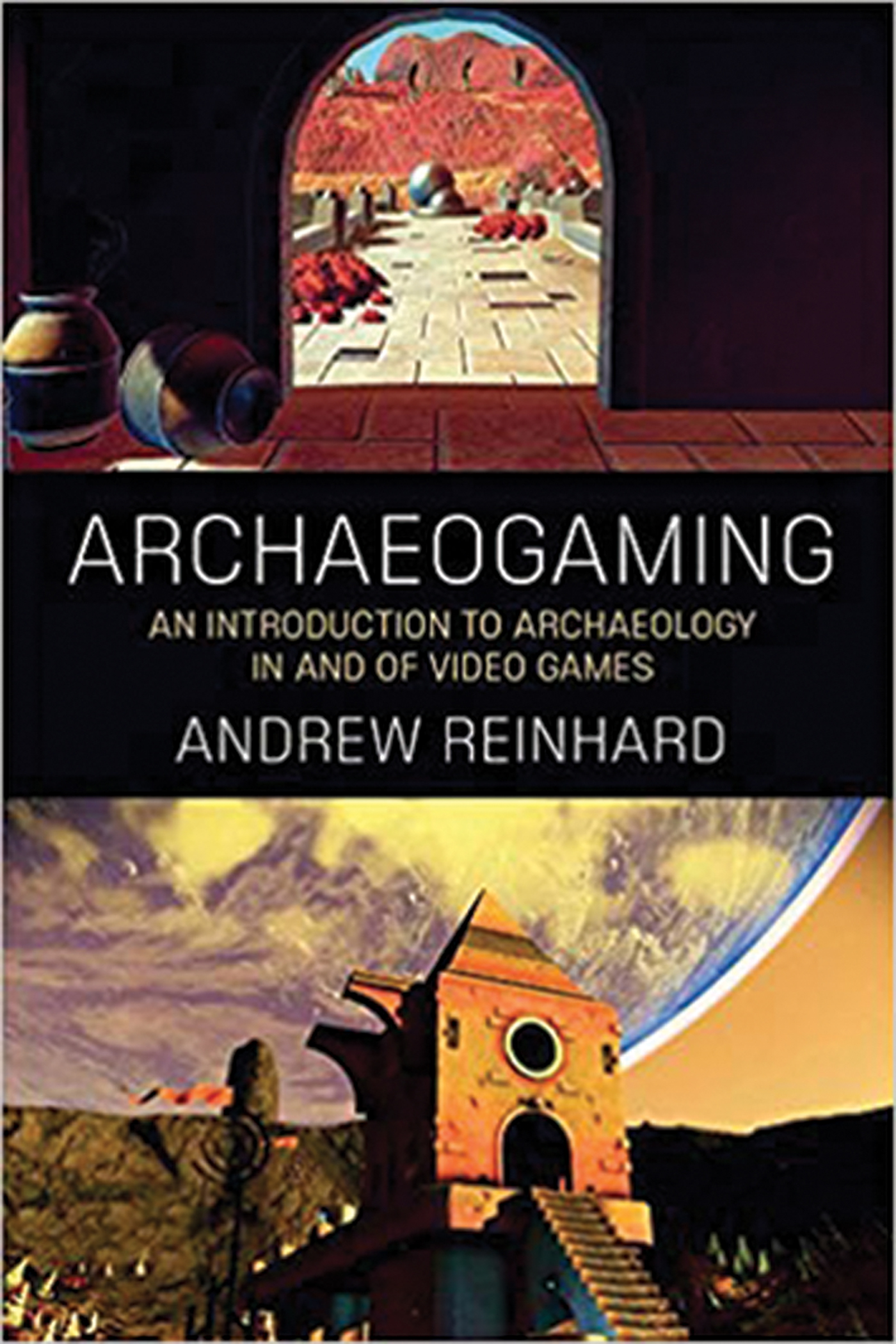
Archaeogaming explores the dynamic intersections between two academic fields not so obviously related: archaeology and video games. Under this new label, Andrew Reinhard analyses the “archaeology both in and of digital games” (p. 2), a new field of study that, as quickly becomes apparent in the first pages of the book, necessarily demands a multidisciplinary gaze. For this enterprise, Reinhard seems to have the right credentials: his analysis is shaped by his professional expertise as an archaeologist, and by a deep knowledge of and evident passion for video games, a medium he knows well, both as a life-long gamer and as a scholar. It also becomes evident that the author is not alone in this pioneering and perhaps unorthodox academic pursuit. As Reinhard develops his ideas, he frequently references works from a vibrant academic community that has formed in recent years. This community actively produces academic publications, hosts conferences and gathers for less formal events such as ‘Jams’, where archaeologists, game developers and other professionals and enthusiasts meet to play, discuss or develop new ‘archaeogames’.
The complexity of archaeogaming is reflected in the variety of subjects covered by the book. As part of its remit, popular perceptions and tropes about archaeology in video games are studied, highlighting how the medium has contributed to reinforcing simplistic views of both what it is that archaeologists actually do and “issues of repatriation, colonialism, and racism” (p. 78) prevalent in popular culture since the nineteenth century (Chapter 2). In this regard, Reinhard concludes that a closer collaboration between archaeologists and game developers is needed to overcome the naive representation of archaeology, or, by increasing levels of technical proficiency, to turn archaeologists themselves into game developers with full control of games’ narratives and mechanics.
A second concern of archaeogaming relates to the application of archaeological tools and methods to study the multiple spaces where games are produced, commercialised and played—both by individuals and gaming communities. In this respect, Reinhard insists throughout the book, from an archaeological perspective, that games are both artefacts and sites: two dimensions that demand different means of study.
As artefacts, video games certainly fit the definition of “things of cultural/historical significance made by people” (p. 29). Indeed, even though the materiality of the medium has radically shifted from cartridges to digital downloads, the processes involved in their conception, creation and commercialisation still leave traces in the real world (Chapter 1). In the fast-moving and ever-changing economic landscape of late capitalism, game corporations and development studios are formed and closed almost at the same pace, leaving remnants with stories that soon begin to fade. As the spaces where games were created become abandoned or repurposed, and game titles are forgotten or, as with the intriguing commercial failure of Atari's E.T. game, even physically buried, it becomes an archaeological concern to uncover and bring back to light their social biographies and histories of use.
The author then centres his attention on the study of games as sites (Chapter 3). Here, his arguments stem from the view that games are built environments, “something made by people for other people to use” (p. 88), which are not essentially different from the environments we build in the natural world. As Reinhard explains, millions of people spend much of their time every day in these environments, developing in some cases a rich game-based culture not originally conceived by the developers. For Reinhard, the ‘immaterialism’ of such worlds does not negate their cultural relevance in the Anthropocene. To understand these environments, he proposes to adapt the methods and tools used in real-world archaeology to the synthetic space, collecting and interpreting data from the game media, file systems and the game-space as created by the developers and inhabited by its digital dwellers.
With the purpose of putting his ideas to the test, Reinhard conducted an archaeological survey in the indie game No Man's Sky, developed by Hello Games in 2016. The game was chosen for its vast scale—it expands to procedurally generated galaxies with 18 quintillion unique planets to explore—allowing him to understand how emergent behaviours and material culture evolve in spaces made by algorithms instead of game designers. To conduct this study, Reinhard studied and adapted survey methods from real-world excavations; after a year of research, however, his preliminary conclusions were discouraging. As he writes, “it appeared at a first review as if the project had been a failure. We weren't able to accomplish our goals in the digital universe and what we found was largely contextually meaningless” (p. 145). This conclusion is illuminating; despite the fact that most of the game's failure to meet the author's expectations can be attributed to its underdeveloped state at the time of its release, the statement also highlights gaps in some of the arguments made in the book, which need to be addressed if the archaeogaming project is to be successful. As the No Man's Sky survey revealed, the current state of gaming technology still offers a limited range of sensory engagement and cultural agency in game worlds, hence a more complete study of the differences between inhabiting synthetic vs real worlds needs to be incorporated into the discussion.
Overall, the book succeeds in its goal of introducing the reader to the new field of archaeogaming. Reinhard presents strong arguments for considering it not just as a new space for archaeological practice, but also as a new methodological approach to the study of video games. Although the topics and references included in the text are more closely aligned to the field of archaeology than to game studies, the author's clarity of style makes it accessible to all readers, with or without an archaeological background. Moreover, his personal anecdotes and gameplay experiences with different game titles, from which his ideas often develop, make it very enjoyable reading.


